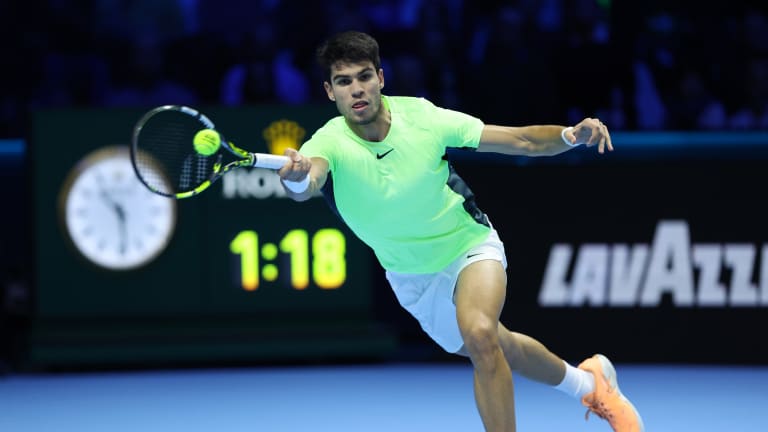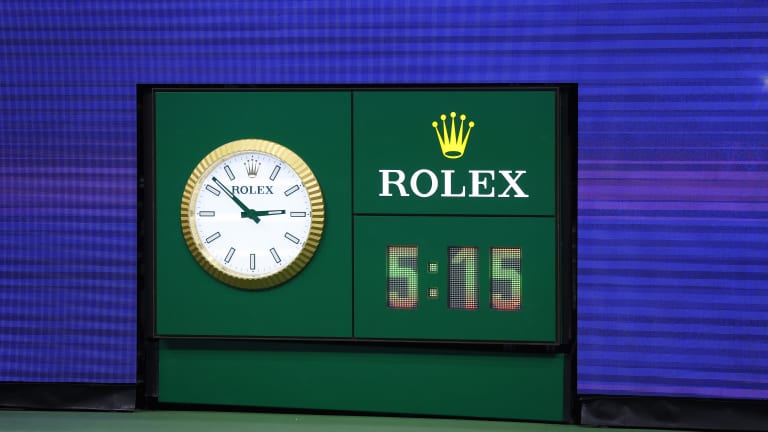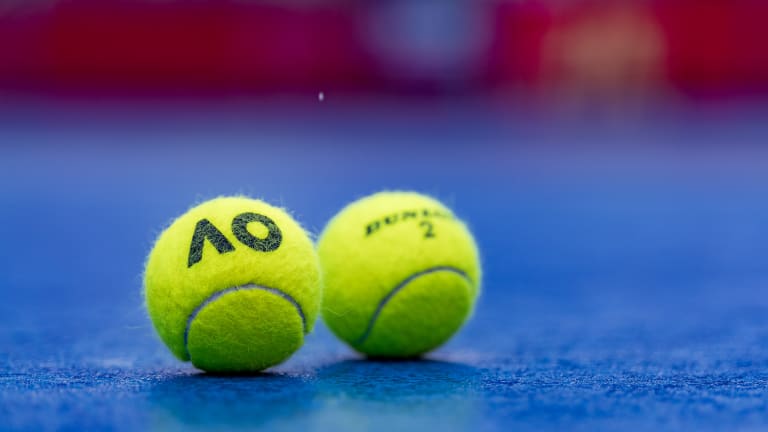ATP Finals
Wanted: Faster Courts
By Nov 20, 2023ATP Finals
Inspired by Nadal, Cahill, respect abounds in Alcaraz-Sinner rivalry
By Nov 20, 2025ATP Finals
How the rivalry between Jannik Sinner and Carlos Alcaraz dominated tennis in 2025
By Nov 17, 2025ATP Finals
ATP Finals takeaway: Jannik Sinner walks the walk on making changes to Carlos Alcaraz matchup
By Nov 16, 2025ATP Finals
Jannik Sinner tops Carlos Alcaraz to retain ATP Finals title, ends 2025 on 15-match win streak
By Nov 16, 2025ATP Finals
Carlos Alcaraz meets Jannik Sinner for ATP Finals trophy | Preview, Pick, Where to Watch
By Nov 15, 2025ATP Finals
"Felt like I could do everything": Carlos Alcaraz books dream ATP Finals title tilt with Jannik Sinner
By Nov 15, 2025ATP Finals
ATP Finals: Carlos Alcaraz vs. Felix Auger-Aliassime | Preview, Pick, Where to Watch
By Nov 14, 2025ATP Finals
Felix Auger-Aliassime: "Beautiful night" in Turin came from riding wave of self-belief against Alexander Zverev
By Nov 14, 2025ATP Finals
ATP Finals: Alex de Minaur vs. Jannik Sinner | Preview, Pick, Where to Watch
By Nov 14, 2025Wanted: Faster Courts
Why quicker surfaces can be beneficial to the game and its players.
Published Nov 20, 2023
Advertising

“It’s okay for an all-world champion like Alcaraz to have to adjust to a faster court,” said Andy Roddick on Tennis Channel. “But give him a chance to stack some matches before he has to make the switch.”
© Getty Images
Advertising

Durations like this one aren't too uncommon in Grand Slam tennis, with the average men's match at a major approaching three hours in length.
© Getty Images
Advertising

“A lot of players got injured because of that,” Alcaraz said about tournaments changing the type of tennis ball used from week to week. “It’s crazy.”
© ©Andy Cheung / Hong Kong Tennis Open / ArcK Photography